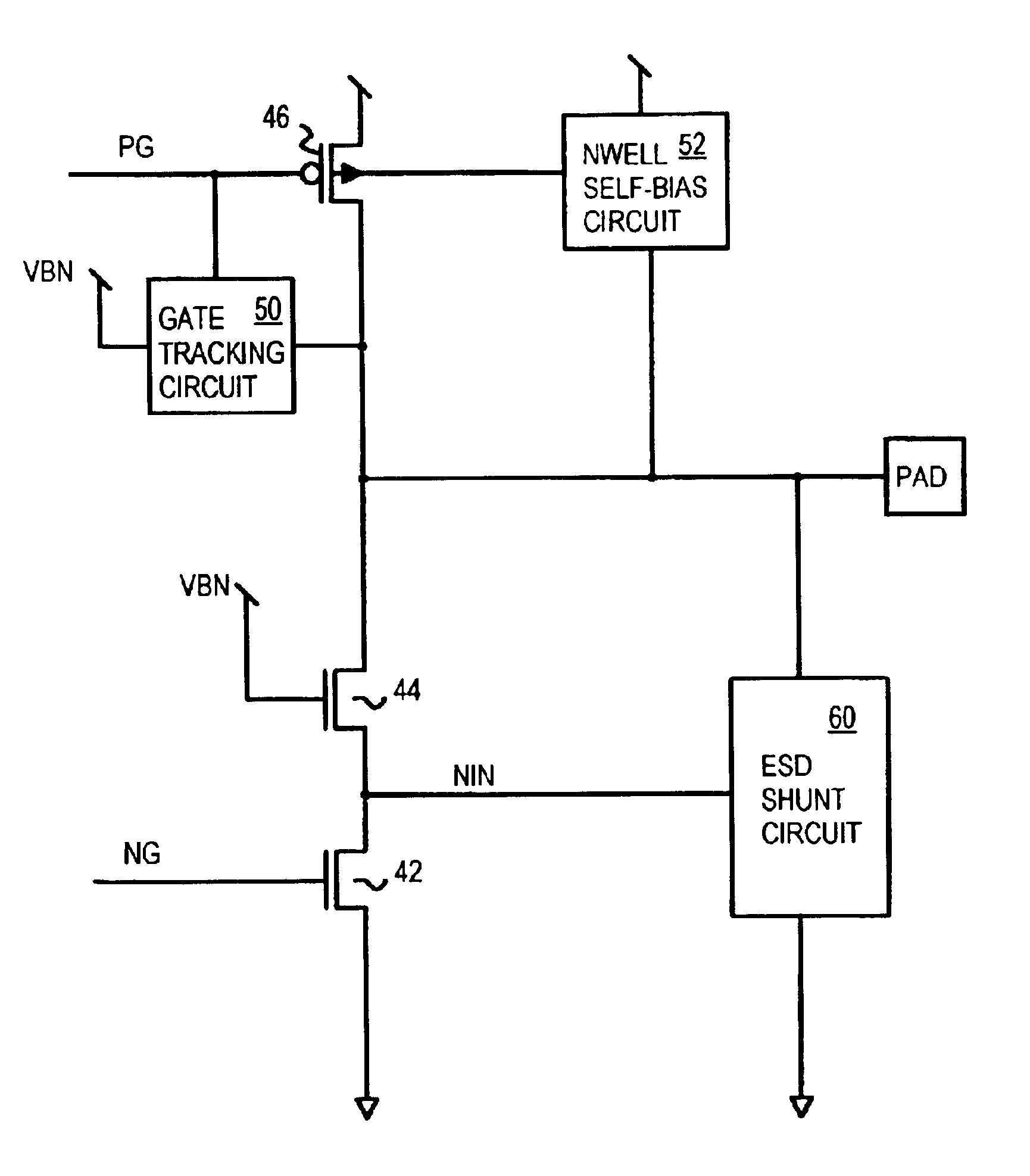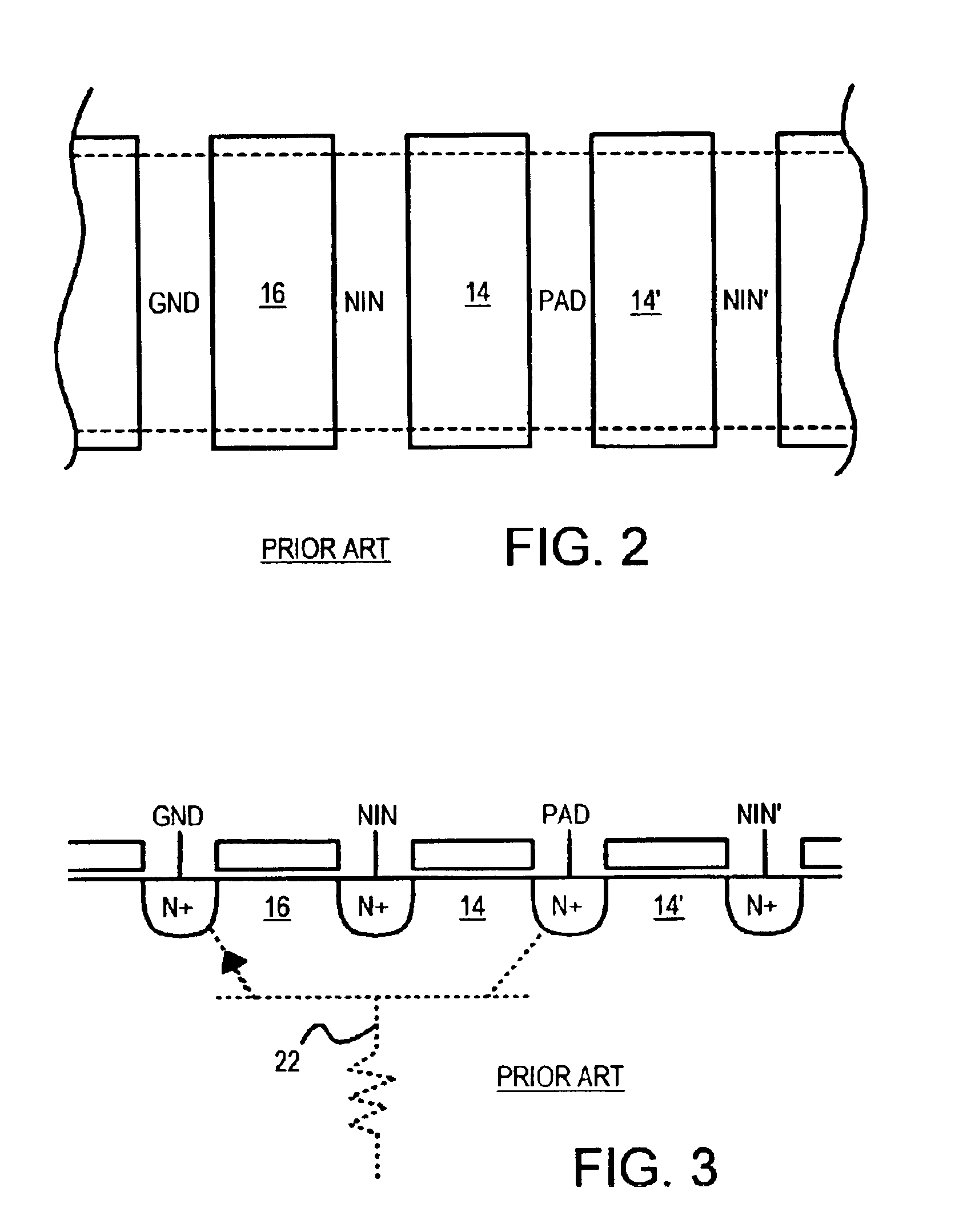Stacked-NMOS-triggered SCR device for ESD-protection
a technology of esd protection and scr device, which is applied in the direction of emergency protective circuit arrangement, emergency protective circuit arrangement for limiting excess voltage/current, and emergency protective circuit arrangement for addressing excess voltage, etc., can solve the problems of gate oxide damage with breakdown voltage, electric shock can melt or otherwise destroy tiny structures in an integrated circuit, and thin gate oxides present challenges
- Summary
- Abstract
- Description
- Claims
- Application Information
AI Technical Summary
Benefits of technology
Problems solved by technology
Method used
Image
Examples
Embodiment Construction
The present invention relates to an improvement in ESD protection circuits. The following description is presented to enable one of ordinary skill in the art to make and use the invention as provided in the context of a particular application and its requirements. Various modifications to the preferred embodiment will be apparent to those with skill in the art, and the general principles defined herein may be applied to other embodiments. Therefore, the present invention is not intended to be limited to the particular embodiments shown and described, but is to be accorded the widest scope consistent with the principles and novel features herein disclosed.
The inventors have realized that the floating intermediate node between two transistors cascaded together increases the breakdown or snapback voltage of the parasitic NPN transistor. The parasitic NPN transistor is harder to turn on, providing less protection during an ESD event, possibly resulting in failures and damage.
The invento...
PUM
 Login to View More
Login to View More Abstract
Description
Claims
Application Information
 Login to View More
Login to View More - R&D
- Intellectual Property
- Life Sciences
- Materials
- Tech Scout
- Unparalleled Data Quality
- Higher Quality Content
- 60% Fewer Hallucinations
Browse by: Latest US Patents, China's latest patents, Technical Efficacy Thesaurus, Application Domain, Technology Topic, Popular Technical Reports.
© 2025 PatSnap. All rights reserved.Legal|Privacy policy|Modern Slavery Act Transparency Statement|Sitemap|About US| Contact US: help@patsnap.com



